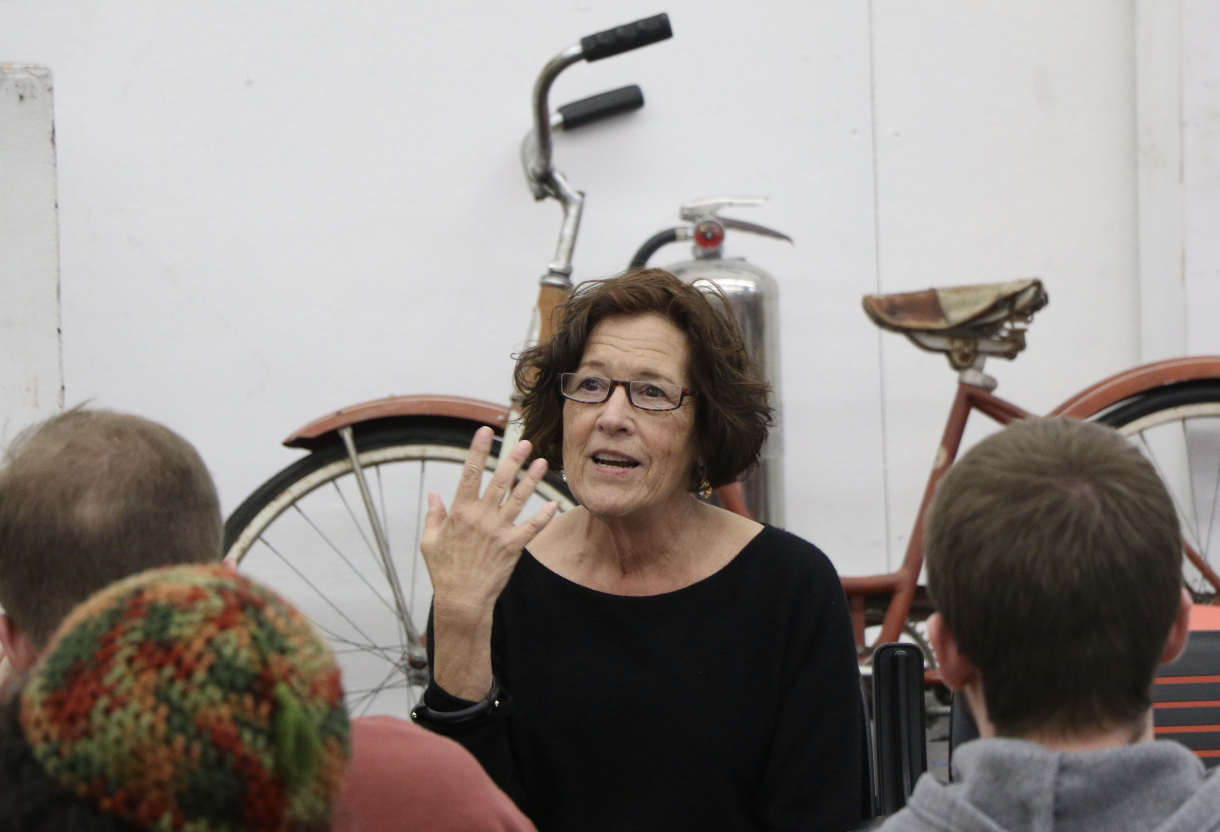
“Why South Dakota Needs Artists” lecture encourages art majors to pursue passions
Visiting artist Arlene Goldbard presented a lecture on Monday to the art majors of USD, providing words of encouragement to students who feel unsupported, and reminded them of the importance of art.
Goldbard, a writer and essayist, challenged the idea that art is a useless field and urged art majors to pursue their disciplines. She lectured on the fulfilling nature of working as an artist and how she believes art adds value to human life.
“Life is meaningless until we create the narrative that gives it shape, until we create the story that says ‘this is where I’ve been, this is who I am, this is where I’m going,’” Goldbard said.
Goldbard addressed challenges unique to South Dakota, such as the historical conflicts between the state and its indigenous population, which Goldbard said artists can heal through art.
“The work that artists do is critical to facing our collective challenges as a society. Our society is suffering from an extreme deficit of empathy,” Goldberg said. “The key to a just and loving society is to cultivate an awareness of our capacity for both harm and healing in every relationship.”
Painting professor Amber Hansen said there are endless reasons why South Dakota needs artists.
“South Dakota needs artists because they serve their communities and the state of South Dakota in many different ways; they can make connections, they can point towards issues or ideas that are important, they can frame different histories or stories or situations, they can bring communities together, they can create work for communities,” Hansen said.
Following the lecture was a workshop on the values of community art practices concerned with resolving ethical dilemmas from collaborative community art projects.
As a continuation of Monday’s events, Goldbard led a second workshop on Tuesday evening about reframing the idea of the arts in South Dakota, featuring stories from participants about the experiences which made them realize the value of art in their communities.

